
Bevendean History Project

Falmer PondThe pond
has a long history from Saxon times to the present day. Falmer is
a small downland village which retains its rural setting lying between
Brighton and Lewes, approximately five miles north-east of Brighton.
Falmer pond is clearly shown on a map drawn in 1799 by William Figg of Lewes, showing the land comprising the Stanmer & Falmer estates owned by the Earl of Chichester.
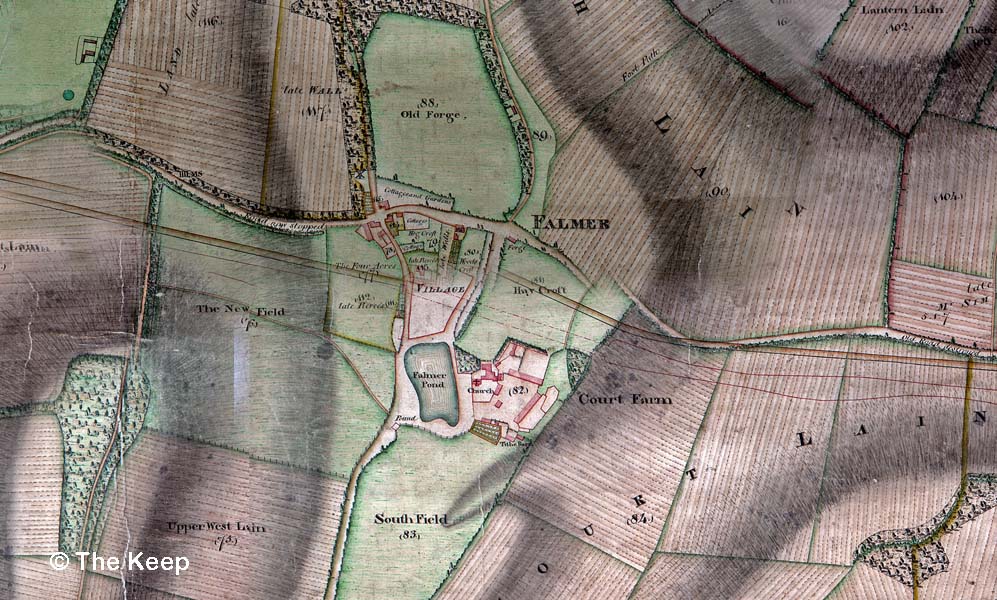
Keep Reference: ACC 3714/4
Falmer church viewed across Falmer Pond c1890 showing the small island in the middle but without the weeping willow growing on the island today.
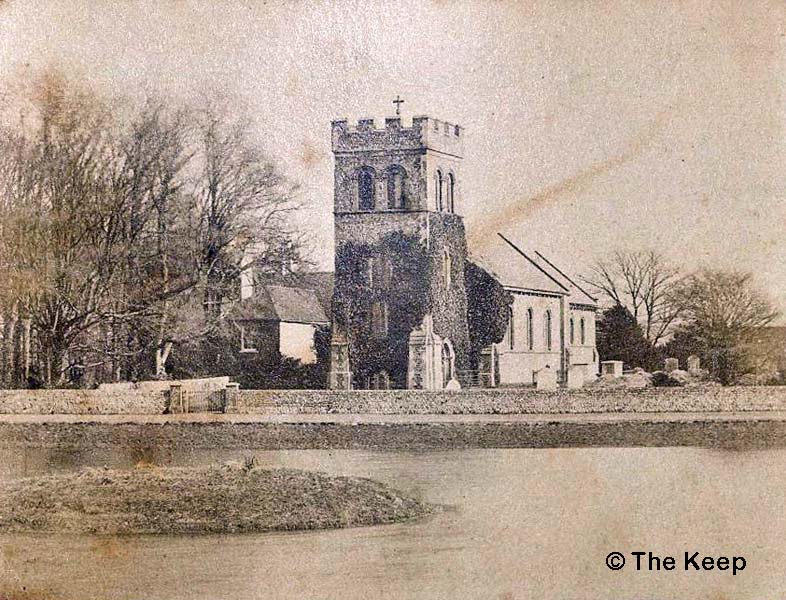
Keep Reference: AMS 5785/3
The village is recorded in the Domesday Book as 'Falemere' which is a Saxon name. There are two possible meanings for the name. One is Fala's Mere, a pond belonging to Fala who may have been a Saxon Chieftain. Or possibly Fallows Mere, which means a dark pool.
Both of these possible meanings confirm that Falmer Pond was in existence in Saxon times.
After the Norman conquest, the village grew as an isolated farm settlement and belonged to the estate of Lewes Priory. Falmer has a large 16th century thatched barn, behind the church. The barn is one of the largest medieval barns in Sussex and was used by the monks of Lewes Priory for storing sheaves of corn.
When Henry VIII dissolved the monasteries in 1536, church estates were given to his subjects who lived at a distance and drew the profits. Thomas Cromwell and Anne of Cleves held Falmer for a few years each. By 1630 Falmer was in the hands of the Craven family of Berkshire and its manor extended over 3,060 acres.
In the 1776 the Falmer Estate was purchased by the Pelham family who already owned Stanmer house and estate.
Thomas Pelham was created Earl of Chichester in 1801 and he reorganised his landholdings to create compact farms of 500 to 1000 acres each.
Falmer Court House was built in the middle of the 18th century. The Chichester family built the Falmer Alms houses in Mill Street in 1869. They also started to rebuilt the church in 1815 and then enlarged it about 25 years later.
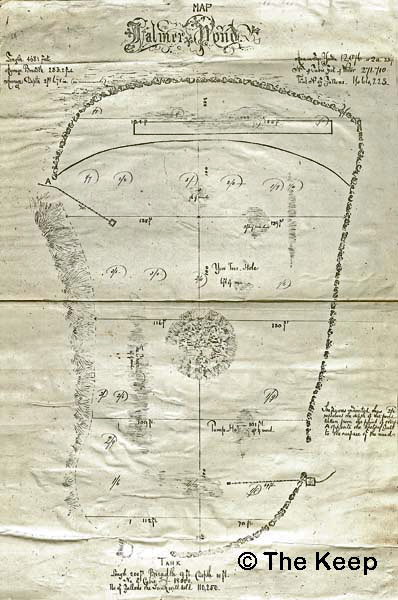
A plan of Stanmer pond dated 1871. The dimensions are given as follows: -
Length 468½ feet
Average Breadth 283.2 feet
Average Depth 2 ft 6.75 inches
Area 12076 square yards
No of cubic feet 271,710
Total Gallons 1664223
Keep Reference: DB/D/64/10
The decline in the downland estates began in the 1880's and the Chichester family sold off large amounts of land after 1910. What was left of the estate was requisitioned by the War Department in 1942. The death of the 8th Earl on active service in 1944 and the incidence of Estate Duty caused the sale of the house and park. The Brighton Corporation purchased the remains of the Stanmer Estate including land formally part of the Falmer estate amounting to 4,958 acres in 1947 for £225,000.
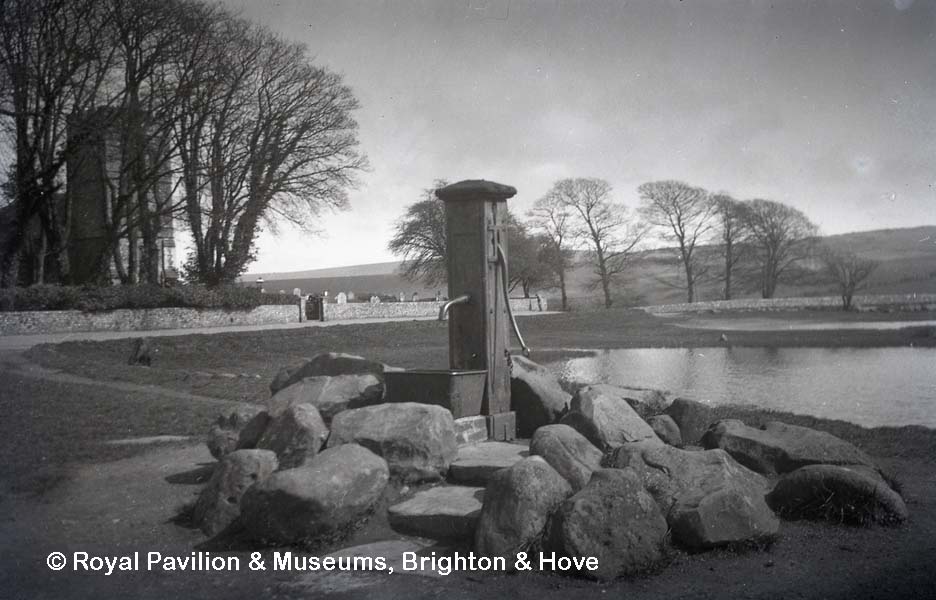
Photograph of the water pump and pond at Falmer taken by Herbert Edward Sydney Simmons (c1930). St Laurence Church is visible just behind the trees.
From the Brighton & Hove Royal Pavilion & Museums Digital Archive.
Ref: hatmp004591_47_d01
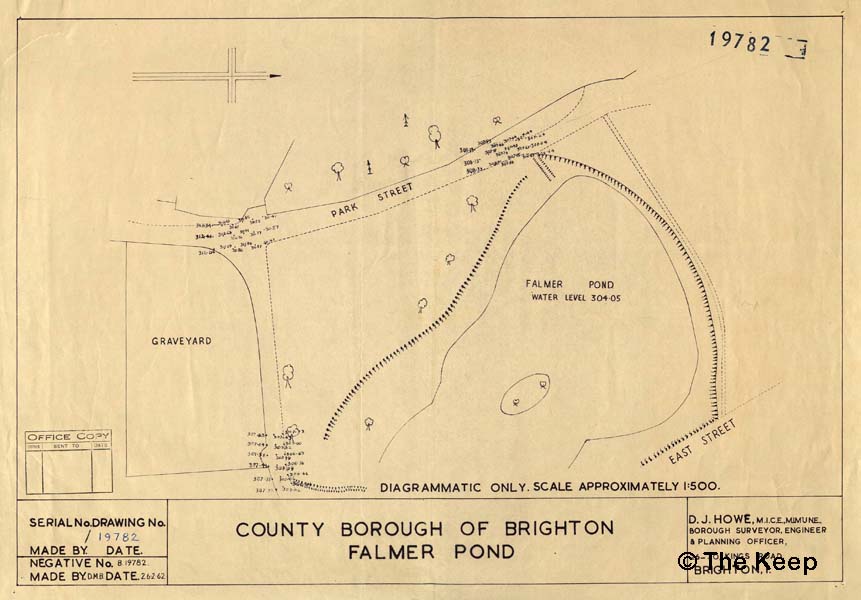
Plan showing levels at Falmer pond, dated 26 February 1962.
Keep Reference: DB/D/84/27/19782
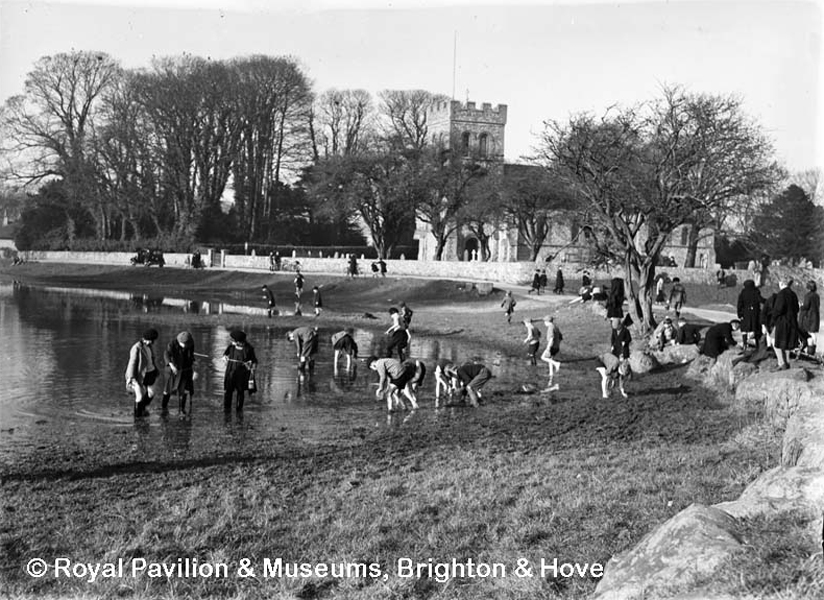
Tadpole catchers at Falmer pond, Brighton, c1938.
From the Brighton & Hove Royal Pavilion & Museums Digital Archive.
Ref: db1124_590_d01_ab10.jpg
Falmer pond and the grass area surrounding it was sold by the Chichester Estates Company to Brighton Corporation on 16 September 1965 for the sum of £200.
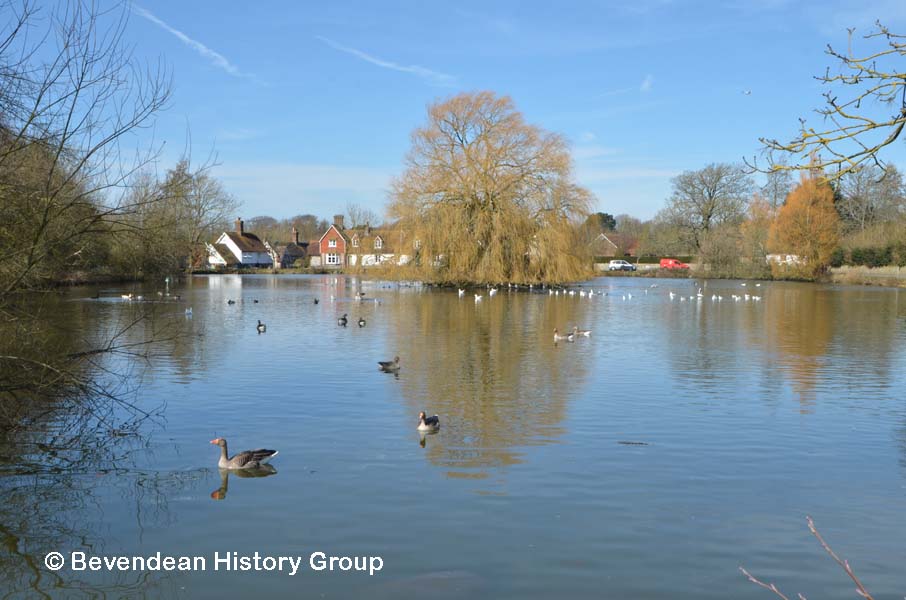
Falmer Pond in March 2015 – Ref: 2015-03-07_DSC_5160
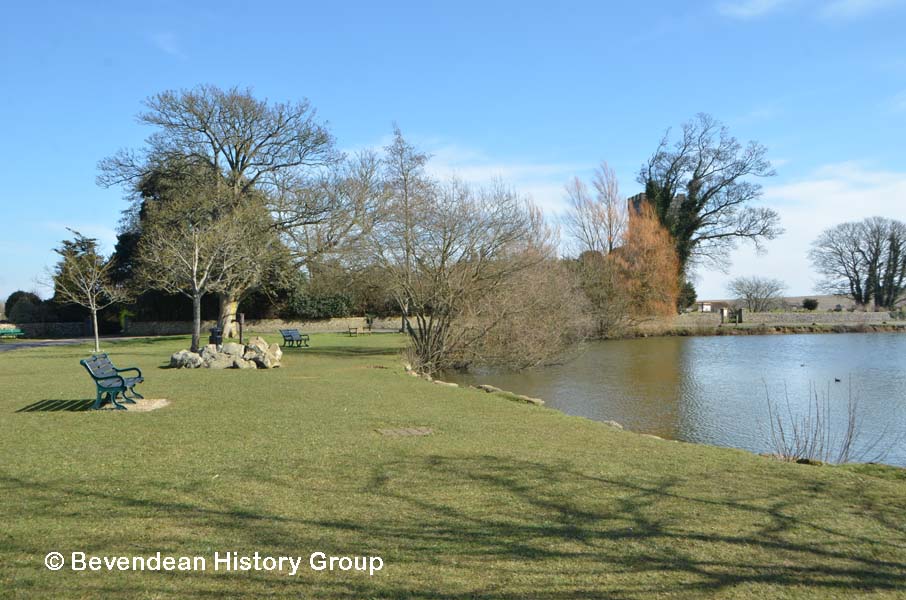
Falmer Pond in March 2015 – Ref: 2015-03-07_DSC_5149
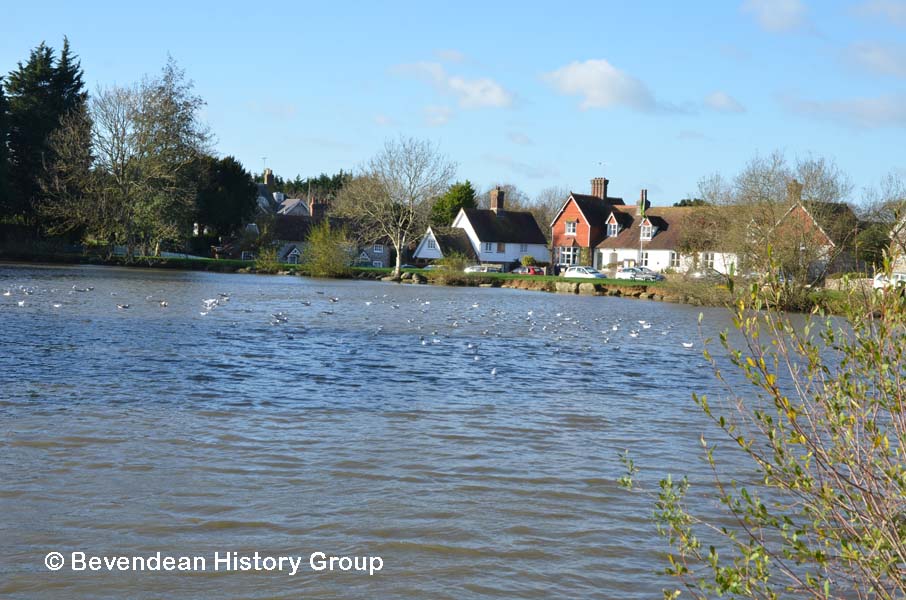
Falmer Pond in November 2015 – Ref: 2015-11-21_DSC_0338
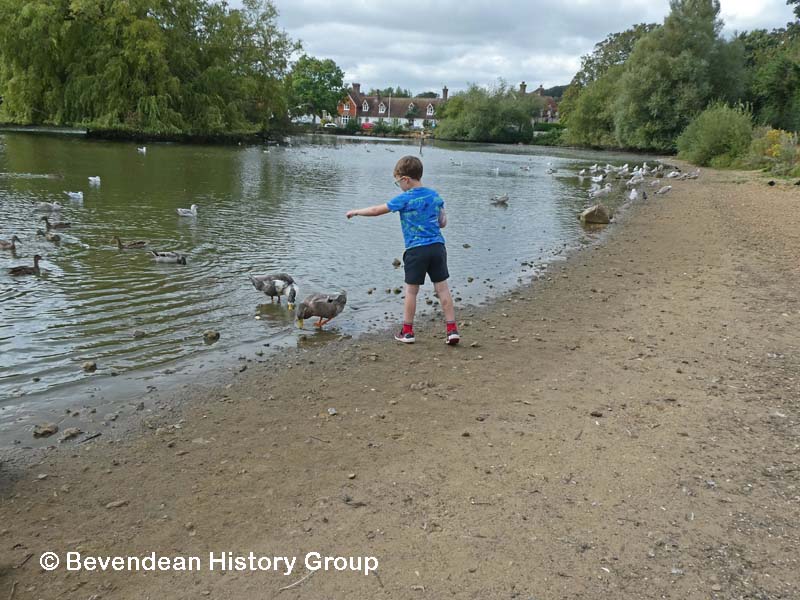
Feeding the ducks and geese in September 2021.
Ref: 2021-09-02_P1220455c
In the summer of 2022, the pond lost most of its water and the fish in the pond started to die. Some fish were saved and taken to a new location where there was plenty of water.
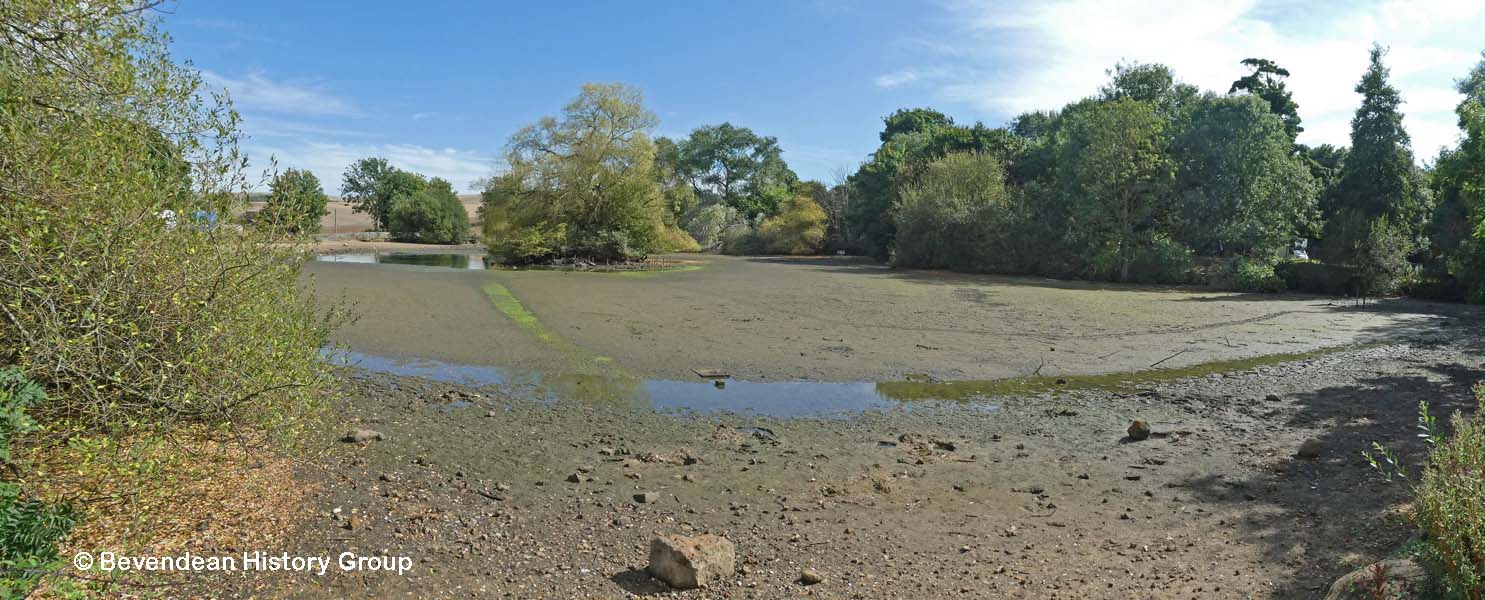
Falmer Pond with very little water in August 2022.
Ref: 2022-08-19_P1340061c
The water level in the pond had risen one month later to almost its usual level.
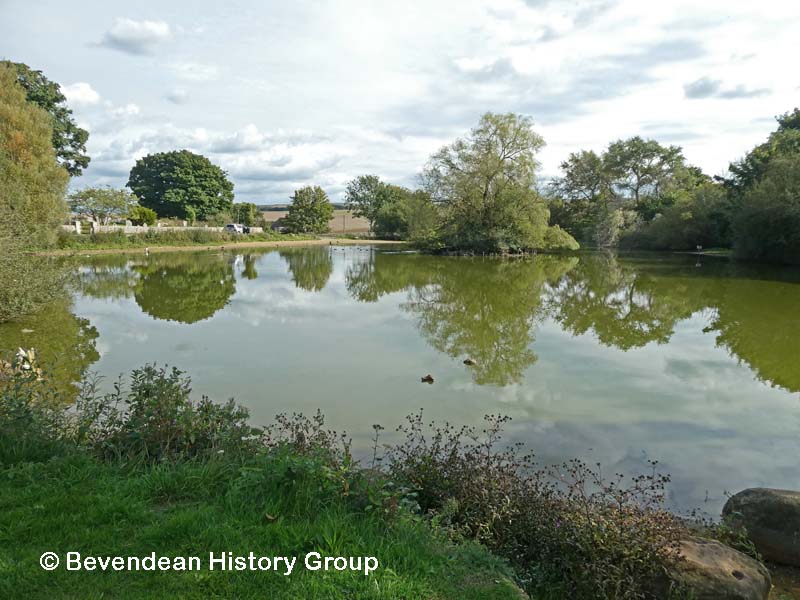
Falmer Pond in September 2022 when the water level had risen.
Ref: 2022-09-20_P1340212c
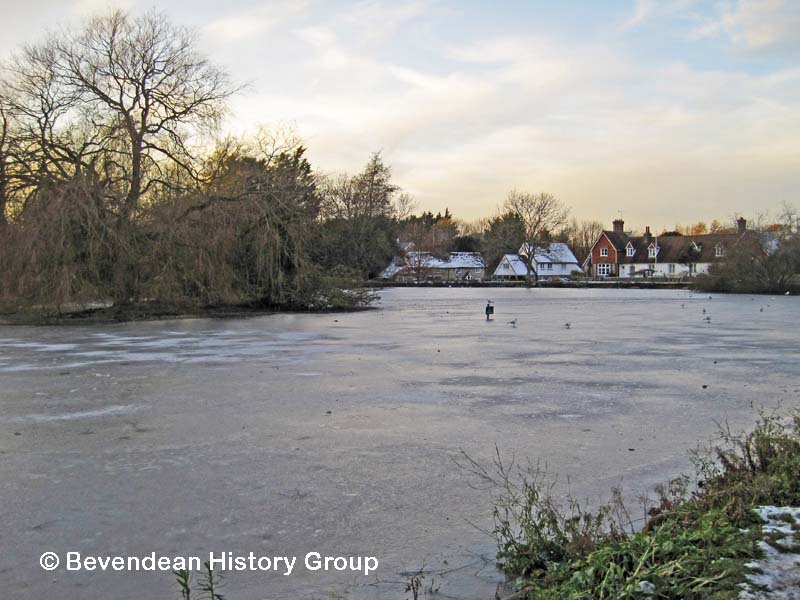
Falmer Pond frozen over in December 2022.
Ref: 2022-12-17_IMG_0070c
Friends of Falmer Pond
The Friends of Falmer Pond have undertaken to improve the pond and its surrounding area. They have secured funding for a feasibility study into a restoration project for the pond.
Phase 1 or the Development Phase funds have been awarded by the National Lottery Heritage Fund (NLHF). This will enable the appointment of a specialist to work with local residents, conservation agencies, local council departments and other interested parties to create a detailed plan for the restoration.
It is hoped that money can then be found to undertake the necessary work to reduce the loss of water from the pond in very dry weather.
More information is available at https://www.friendsoffalmerpond.org/
Falmer pond is clearly shown on a map drawn in 1799 by William Figg of Lewes, showing the land comprising the Stanmer & Falmer estates owned by the Earl of Chichester.

Keep Reference: ACC 3714/4
Falmer church viewed across Falmer Pond c1890 showing the small island in the middle but without the weeping willow growing on the island today.

Keep Reference: AMS 5785/3
The village is recorded in the Domesday Book as 'Falemere' which is a Saxon name. There are two possible meanings for the name. One is Fala's Mere, a pond belonging to Fala who may have been a Saxon Chieftain. Or possibly Fallows Mere, which means a dark pool.
Both of these possible meanings confirm that Falmer Pond was in existence in Saxon times.
After the Norman conquest, the village grew as an isolated farm settlement and belonged to the estate of Lewes Priory. Falmer has a large 16th century thatched barn, behind the church. The barn is one of the largest medieval barns in Sussex and was used by the monks of Lewes Priory for storing sheaves of corn.
When Henry VIII dissolved the monasteries in 1536, church estates were given to his subjects who lived at a distance and drew the profits. Thomas Cromwell and Anne of Cleves held Falmer for a few years each. By 1630 Falmer was in the hands of the Craven family of Berkshire and its manor extended over 3,060 acres.
In the 1776 the Falmer Estate was purchased by the Pelham family who already owned Stanmer house and estate.
Thomas Pelham was created Earl of Chichester in 1801 and he reorganised his landholdings to create compact farms of 500 to 1000 acres each.
Falmer Court House was built in the middle of the 18th century. The Chichester family built the Falmer Alms houses in Mill Street in 1869. They also started to rebuilt the church in 1815 and then enlarged it about 25 years later.

Length 468½ feet
Average Breadth 283.2 feet
Average Depth 2 ft 6.75 inches
Area 12076 square yards
No of cubic feet 271,710
Total Gallons 1664223
Keep Reference: DB/D/64/10
The decline in the downland estates began in the 1880's and the Chichester family sold off large amounts of land after 1910. What was left of the estate was requisitioned by the War Department in 1942. The death of the 8th Earl on active service in 1944 and the incidence of Estate Duty caused the sale of the house and park. The Brighton Corporation purchased the remains of the Stanmer Estate including land formally part of the Falmer estate amounting to 4,958 acres in 1947 for £225,000.

Photograph of the water pump and pond at Falmer taken by Herbert Edward Sydney Simmons (c1930). St Laurence Church is visible just behind the trees.
From the Brighton & Hove Royal Pavilion & Museums Digital Archive.
Ref: hatmp004591_47_d01

Plan showing levels at Falmer pond, dated 26 February 1962.
Keep Reference: DB/D/84/27/19782

Tadpole catchers at Falmer pond, Brighton, c1938.
From the Brighton & Hove Royal Pavilion & Museums Digital Archive.
Ref: db1124_590_d01_ab10.jpg
Falmer pond and the grass area surrounding it was sold by the Chichester Estates Company to Brighton Corporation on 16 September 1965 for the sum of £200.

Falmer Pond in March 2015 – Ref: 2015-03-07_DSC_5160

Falmer Pond in March 2015 – Ref: 2015-03-07_DSC_5149

Falmer Pond in November 2015 – Ref: 2015-11-21_DSC_0338

Feeding the ducks and geese in September 2021.
Ref: 2021-09-02_P1220455c
In the summer of 2022, the pond lost most of its water and the fish in the pond started to die. Some fish were saved and taken to a new location where there was plenty of water.

Falmer Pond with very little water in August 2022.
Ref: 2022-08-19_P1340061c
The water level in the pond had risen one month later to almost its usual level.

Falmer Pond in September 2022 when the water level had risen.
Ref: 2022-09-20_P1340212c

Falmer Pond frozen over in December 2022.
Ref: 2022-12-17_IMG_0070c
Friends of Falmer Pond
The Friends of Falmer Pond have undertaken to improve the pond and its surrounding area. They have secured funding for a feasibility study into a restoration project for the pond.
Phase 1 or the Development Phase funds have been awarded by the National Lottery Heritage Fund (NLHF). This will enable the appointment of a specialist to work with local residents, conservation agencies, local council departments and other interested parties to create a detailed plan for the restoration.
It is hoped that money can then be found to undertake the necessary work to reduce the loss of water from the pond in very dry weather.
More information is available at https://www.friendsoffalmerpond.org/
